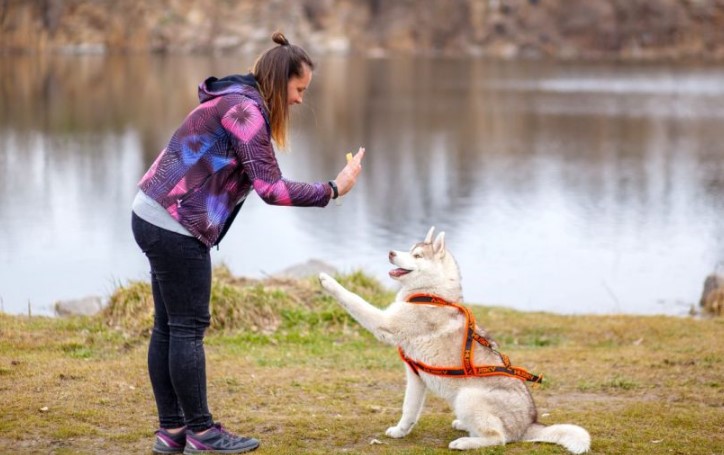
Animal Training: Unlocking the Secrets of Effective Training Methods
Introduction
Welcome to our comprehensive guide on animal training! In this article, we will delve into the fascinating world of animal training, exploring various techniques, methods, and best practices to help you unlock the secrets of effective training. Whether you’re a professional animal trainer or a pet owner looking to enhance the bond with your furry friend, this article will provide valuable insights and actionable tips. So, let’s embark on this exciting journey of understanding and mastering the art of animal training.
Animal Training: Building a Strong Foundation
The Importance of Animal Training
Animal training is an essential aspect of ensuring the well-being, safety, and cooperation of our animal companions. It enables us to communicate effectively with animals, teaching them desired behaviors while minimizing undesirable ones. Through training, animals can learn to follow commands, perform tricks, overcome fears, and develop a harmonious relationship with their human counterparts.
Key Principles of Animal Training
- Positive Reinforcement: One of the most effective and humane training methods is positive reinforcement. This approach involves rewarding desired behaviors, such as treats, praise, or playtime, to encourage animals to repeat those behaviors. Positive reinforcement creates a positive association and motivates animals to engage in the desired behavior willingly.
- Consistency: Consistency is crucial in animal training. Animals thrive in predictable environments where they can anticipate the consequences of their actions. By being consistent in our cues, commands, and rewards, we can establish clear expectations and facilitate the learning process.
- Patience and Persistence: Animals, like humans, have unique learning curves. Some may grasp new concepts quickly, while others may require more time and repetition. Patience and persistence are key virtues in animal training, allowing us to persevere through challenges and help animals reach their full potential.
Animal Training Techniques
Clicker Training: A Powerful Communication Tool
Clicker training is a popular and effective method used to train animals across various species. This technique involves using a clicker—a small device that emits a distinct sound—to mark desired behaviors. By pairing the sound of the clicker with rewards, animals quickly associate the click with positive reinforcement. Clicker training enables precise timing and clear communication, making it a valuable tool for shaping behaviors and teaching complex tasks.
Target Training: Guiding Behaviors with Precision
Target training is a technique that involves using a target object, such as a stick or a mat, to guide animals’ behaviors. By teaching animals to touch or follow the target, we can direct their movements and shape desired behaviors. Target training is particularly useful for teaching animals tricks, agility courses, or cooperative medical procedures, as it allows for precise control and coordination.
Desensitization and Counterconditioning: Overcoming Fears and Phobias
Desensitization and counterconditioning are valuable techniques used to help animals overcome fears, phobias, or anxiety-inducing stimuli. By gradually exposing animals to the source of their fear while pairing it with positive experiences, we can change their emotional response from fear to relaxation or positive anticipation. This method is commonly used in addressing issues like separation anxiety, noise sensitivity, or fear of specific objects or environments.
Shaping: Building Behaviors Step by Step
Shaping is a technique that involves breaking down complex behaviors into small, achievable steps. By reinforcing each incremental progress, we can gradually shape and refine the desired behavior. Shaping is particularly useful when training animals for tasks that require multiple actions or sequences, such as obedience competitions, search and rescue missions, or theatrical performances.
Animal Training FAQs
FAQ 1: How long does it take to train an animal?
Training timelines can vary depending on several factors, including the animal’s species, age, temperament, and the complexity of the behavior being trained. Some animals may learn basic commands within a few weeks, while others may require months of consistent training. Remember, patience and persistence are essential during the training process.
FAQ 2: Is it possible to train older animals?
Yes, it is absolutely possible to train older animals. While younger animals may have a higher learning rate, older animals can still acquire new skills and behaviors through consistent training. It’s important to tailor the training methods and expectations according to the individual animal’s age and physical capabilities.
FAQ 3: Are there any risks involved in animal training?
When conducted correctly and ethically, animal training is generally safe. However, it’s crucial to prioritize the well-being and safety of both the animal and the trainer. Avoid using aversive training methods that can cause harm or distress to the animal. Always consult with professional trainers or veterinarians if you have concerns or encounter challenges during the training process.
FAQ 4: Can I train my own pet at home?
Absolutely! Many basic training exercises can be done at home with your pet. Simple commands like sit, stay, come, and walking on a leash can be taught using positive reinforcement techniques. However, for more complex behaviors or specific training goals, it’s advisable to seek guidance from professional trainers who can provide expert advice and support.
FAQ 5: What are some common mistakes to avoid in animal training?
One common mistake in animal training is inconsistency. Animals thrive in structured and predictable environments, so it’s important to be consistent with cues, commands, and rewards. Another mistake is relying solely on punishment-based methods, which can lead to fear, aggression, or anxiety in animals. Instead, focus on positive reinforcement and reward-based training for optimal results.
FAQ 6: Can animals be trained without using food rewards?
While food rewards are highly effective in training, they are not the only form of reinforcement. Animals can also be motivated by play, praise, toys, or other rewards that they find valuable. It’s important to understand your animal’s preferences and use a variety of rewards to keep the training engaging and enjoyable for them.
Conclusion
Animal training is a dynamic and rewarding journey that enhances the bond between humans and animals. By employing positive reinforcement techniques, consistency, and patience, we can unlock the full potential of our animal companions. Remember to approach training with empathy, respect, and a deep understanding of each animal’s unique needs and capabilities. So, embark on this adventure of animal training, and witness the incredible transformations that occur when we communicate effectively with our furry friends.
Partner Site : Computer Technology, Health And Wellness, Addiction Treatment, Home Maintenance, Home Wine, Healthcare Information, Car Accident, Food Recipes, E-Sports News, Floor Care Advice
You May Also Like

Dog & Cat Breeds: Exploring the World of Furry Companions
September 9, 2023
Healthy Pet Food: Nourishing Your Furry Friend for Optimal Well-being
July 9, 2023